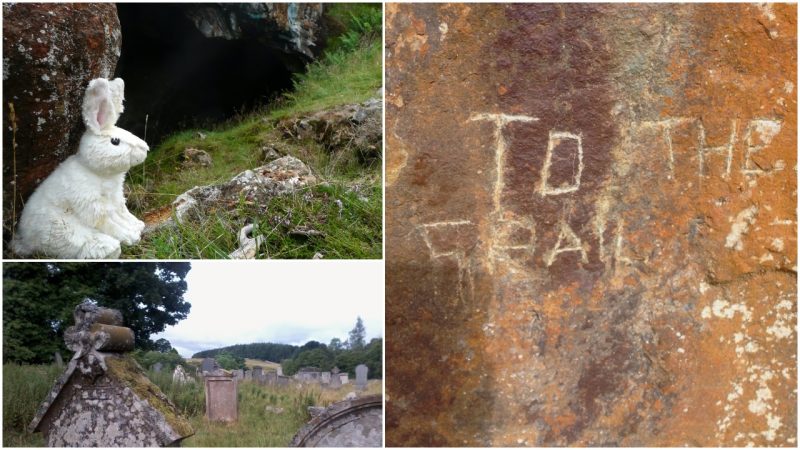Aside from scenes shot at Doune Castle, the most famous location in Monty Python and the Holy Grail is arguably the lair of the killer white rabbit. The scene is often talked about, but the iconic cave is much less visited than a town castle due to its obscurity. It requires more effort to find.
Locating a hole on a hillside in the Highlands of Scotland seemed very much like trying to find a needle in a haystack. But in the location documentary made by Terry Jones and Michael Palin for the Holy Grail DVD, they included a visit to the cave without being much more specific than saying it was near Loch Tay. As the DVD documentary was only a few years old at the time, I reasoned that much of the background scenery would not have changed much. So I tried to match some of the shots of Mike and Terry walking around Loch Tay with the imagery on Google Streetview, and after a lot of clicking around I managed to find some familiar looking trees.
I soon found myself on a hired mountain bike, riding out of Killin, attempting to negotiate the nine miles of narrow road that runs along the south side of Loch Tay. Knowing a mobile phone signal would be patchy, I came up with a primitive version of GPS in the form of printing the identifying Streetview shots from the internet and securing them on my wrist with an elastic band. This meant I didn’t have to keep stopping and consulting a map to check my position. Logically, all I had to do was match the printed images to what I was seeing.
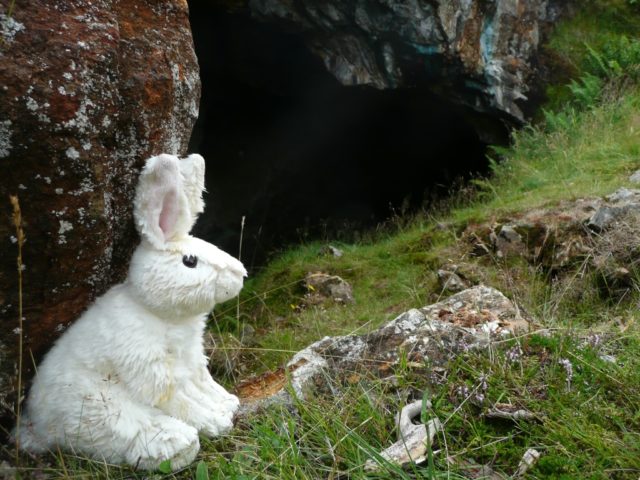
One thing I always admire about Scotland is its natural ability to look stunning regardless of the weather. Fortunately, it was sunny, and even though I was there due to my interest in a particular film, it was a beautiful ride. The small waves of the loch lapped gently at the shoreline, the generous beams of sunshine filtered down through the trees, and the sounds of sheep in nearby fields really made it a pleasurable place to be. The peace and quiet in such a stunning part of the world really helps when you are attempting to ride up steep hills. The southern loch road is less busy than the northern route, so aside from the occasional oncoming car, it was easy to admire the quiet tranquility of the area. But I was also eager to keep my appointment with the home of a fictional killer rabbit. Due to not knowing how long the journey was going to take (and wanting to have as much time as possible at said cave), I pushed myself to have as few drink breaks as possible.
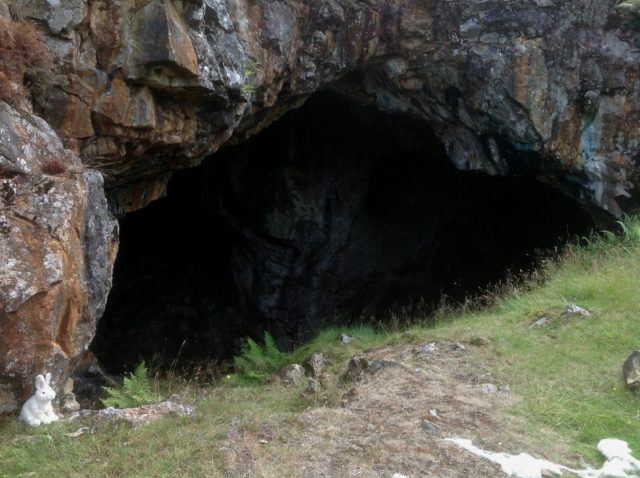
Finally I found a match with my forearm GPS and arrived at the place–I had to dismount and hop over the barb wire fence. Around 40 years after the Pythons had trudged up this same hill, I approached the cave. I knew I was in the right place due to a carving in the rock that promised me that the Grail was close.
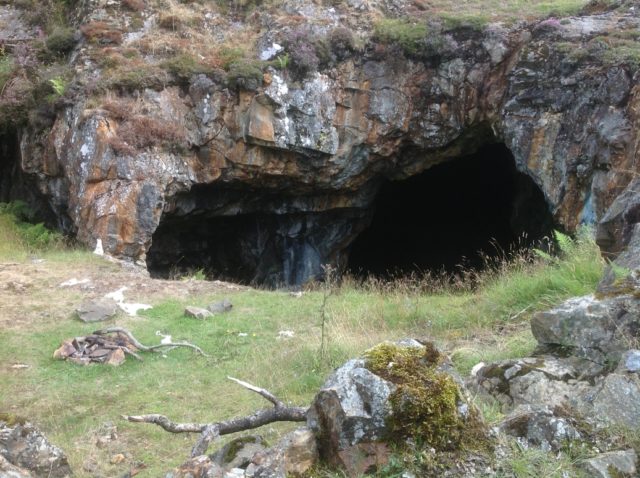
In one of the best surprises of the day, a white rabbit was there to greet me. Someone had left a toy bunny to guard the entrance to the cave. I only hope future visitors leave this toy where it is so that everyone who makes the effort to visit can be greeted with such a fun surprise when they get there. Using Twitter, I sent a picture of the bunny to Python member Eric Idle, who seemed to find it amusing and sweet.
In the movie, the forefront of the rabbit cave is strewn with the bones of its previous victims. Someone had attempted to re-create the effect with various remnants of local wildlife, which created a fun effect.
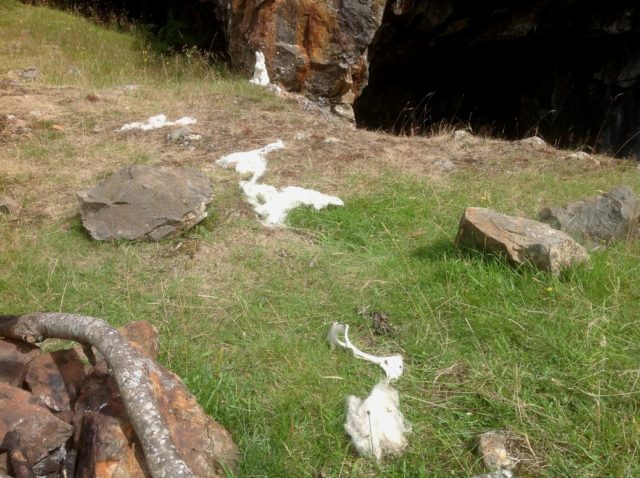
I had originally intended to make a website with really specific details on how to find various Monty Python locations, but on my approach to the rabbit cave, I noticed some trash that had been left lying around and was concerned that a big increase in visitors might lead to the natural environment being ruined and soiled.
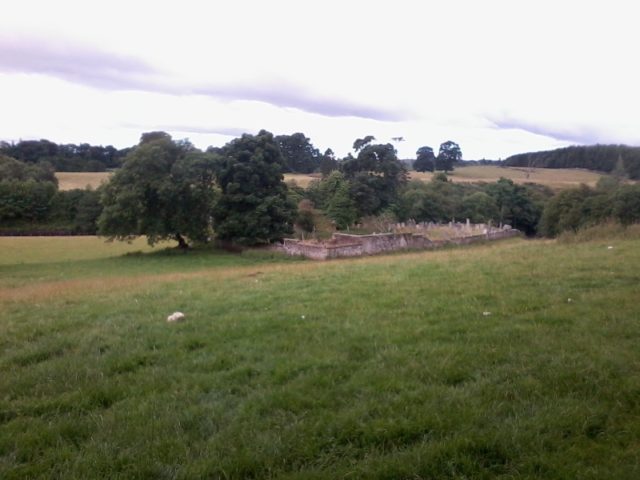
So after thinking about it for a while, I decided to void my website plan but made a point of tying some of the rubbish to my bike frame to take back to Killin. Although my legs ached, I rode 18 miles that day, but it was great fun among such stunning countryside. Rabbits are easier to find than witches.
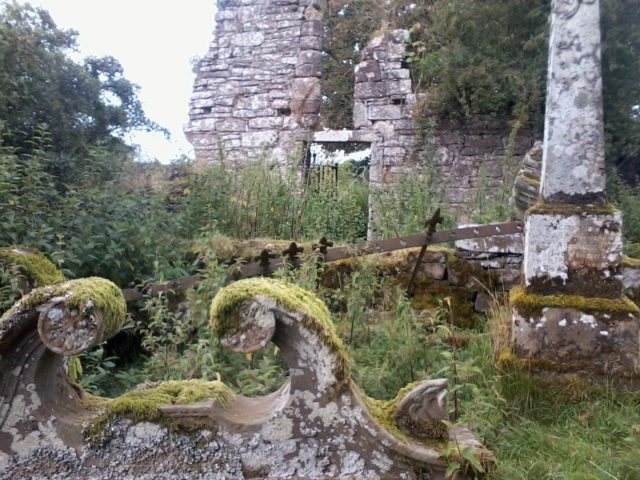
One Holy Grail filming location that never seems to be identified is the scene when local villagers think they’ve found a witch (played by Connie Booth, otherwise known as Polly in Fawlty Towers) and with guidance from Terry Jones’ Sir Bedevere, they surmise that they need to weigh her to find out if she is the same mass as a duck and thus prove she is a witch (obviously). The building used for the set in that scene never seems to be mentioned in any location guide, so it aroused my interest.
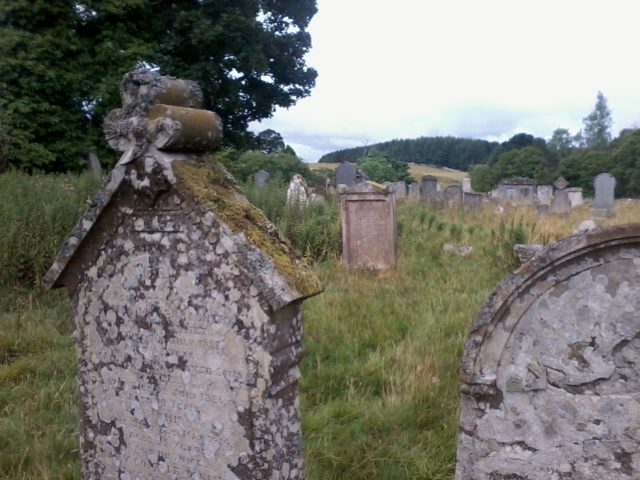
After internet searches proved fruitless, I sent an inquiry to the local tourist information office in Doune. After a bit of back and forth, they located a single page in a book that mentioned an old house next to the Kilmaddock cemetery.
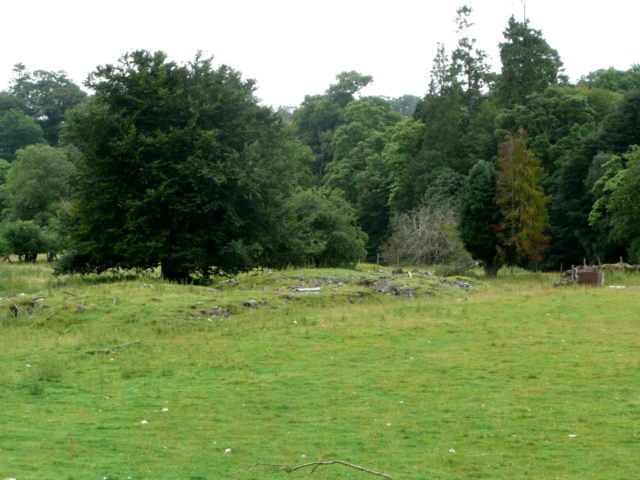
There was a old black and white photo and a paragraph containing a fleeting mention of it being used for filming Monty Python. That was the lead I needed, but again due to it being off road, to see what the site looked like nowadays I needed to have a look for myself. Google Maps seemed to indicate a derelict site, but the satellite imagery seemed to have been taken in summer and thus the nearby trees were obscuring the ground. There was definitely still an old cemetery nearby.
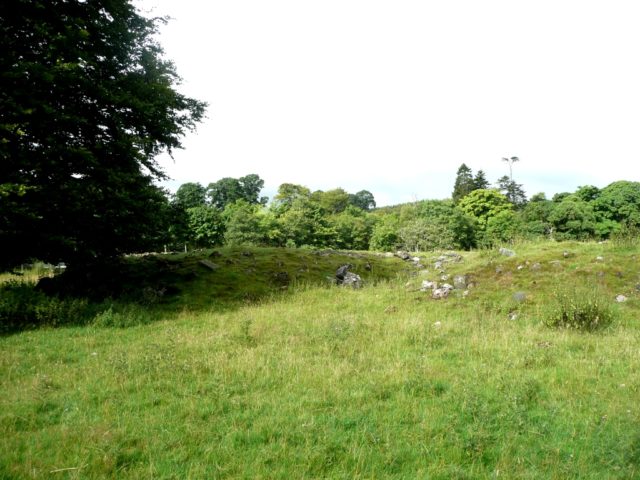
Once back in Doune, I walked along a busy road that leads to Callander that has a turn-off through a short forest and comes out into a field. Knowing that the house was the old Kilmaddock manse, it turns out that the house was already in a decayed and shambolic state when the Python crew went to use it in the mid 1970s. There are photos of the set dressed ready for Holy Grail filming and it is clear how much they tidied the site up to make it looked lived in.
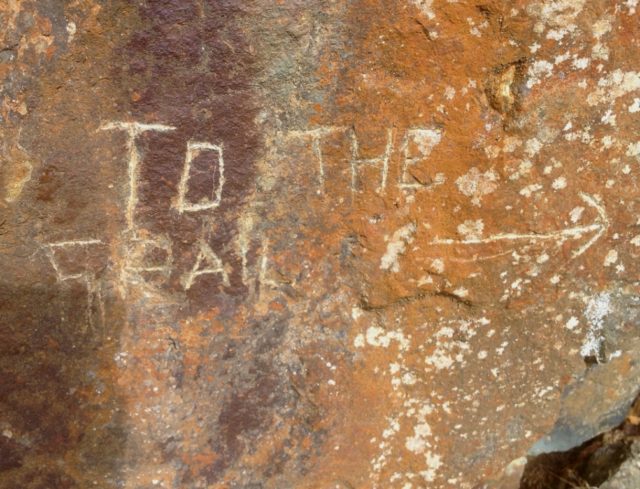
Sadly for Python fans, the only remains are some lumpy turf and the vague outline of where the structure once stood. This ensures the most common visitors are sheep and the occasional dog walker. The cemetery is still there and looks very picturesque, with dates on the headstones often being several hundred years old.
Related story from us: On the Trail of Pythons and Bandits
But I was at least happy to have visited the last main unknown location from the Holy Grail film. What is wonderful about film location hunting is that it will often bring you to places that one may otherwise have never discovered. These little pockets of the world will give up some of their secrets for those willing to make an effort to visit.
Dave Wilson lives in Cornwall, has written film review columns for Cornish newspapers, and has met all but one of the surviving members of Monty Python. He spends a lot of his spare time in the cinema and is quite happy to ask questions in auditoriums packed with people when it is on a subject he is passionate about.
